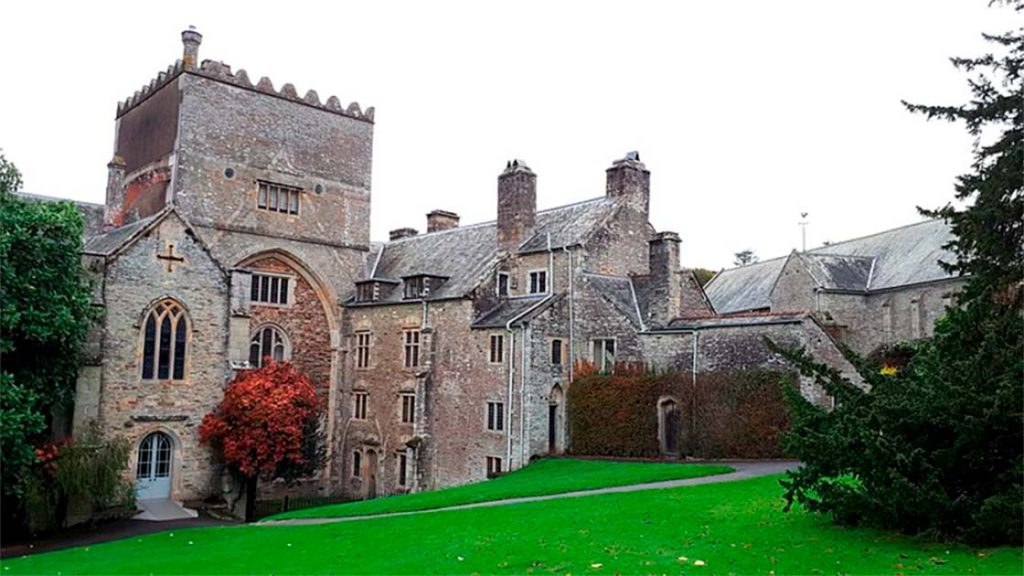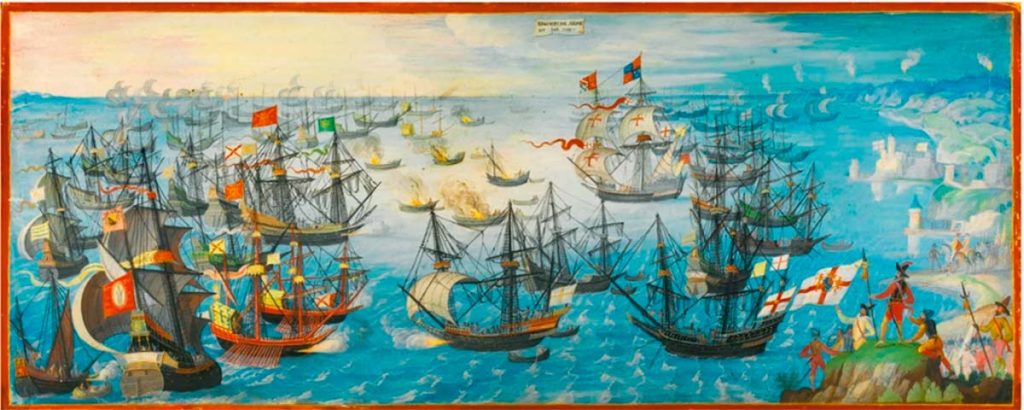In the wild lands of Dartmoor in the far south west of the United Kingdom, anything seems possible. There are stories of wild beasts roaming the moorland, haunted jails and cruel murders.
But among them all, perhaps the most famous figure from history whose name is mentioned is Sir Francis Drake, Queen Elizabeth I’s pirate and hero of the fight against the mighty Spanish Armada.
Sir Francis Drake called Buckland Abbey his home, and legend says he never left. Does Sir Francis Drake still drive a black hearse around the grounds of his haunted home?
There have been many folklore stories and legends about England’s castles and abbeys. These places have a rich history and, along with rich history, also hold a lot of significance in folk legends.
The paranormal and supernatural aspect of life has been a matter of interest for many people, and England is rich with ghost stories. There have been many legends and stories about the haunted corridors of castles and abbeys where many figures from history have walked. Buckland Abbey is no different.
The Abbey was purchased by Sir Francis Drake in 1580 with his riches gained from looting Spanish vessels on his many expeditions. He spent 15 years of his life at the Buckland Abbey, and it was his beloved home. And after his death, it was said that he requested a prized possession to be kept at the Abbey as a last wish.
The History of Buckland Abbey
Since Sir Francis Drake loved his home so much, it only makes sense that even after his death, his spirit found his way home and stayed there for the rest of eternity. The history of the Buckland Abbey is very extensive and serves as the perfect setting for a spooky story, and the wild Dartmoor landscape makes for a perfect setting.

Buckland Abbey is a large manor that dominates the landscape of the Tavy Valley in Devon. The large manor was founded in the year 1278 by a community of Cistercian monks who grew crops and kept livestock at the manor.
The manor was the center of agriculture and livestock breeding in Dartmoor for much of its early history. The manor was even extended by the monks who lived here and grew their estate into a successful livelihood.
- Sir Walter Raleigh: Why was Elizabeth I’s Favorite Courtier Executed?
- Greenwich, Queen Anne, and the Ghost(s) of the Queen’s House
When Buckland Abbey was a monastery, it had 27 acres (11 hectares) of fruit orchards where apples were primarily grown. The monastery even had a cider brewery for all those apples. The medieval cider press is still on the premises of the abbey today.
Under the reign of the King Henry VIII, the monasteries lost their status and wealth. Buckland Abbey was one such victim of Henry’s “Dissolution of the Monasteries”, and in 1580, it was sold to Sir Francis Drake.
Drake was not the first private owner of the Abbey. The original owner who did the restoration of the Buckland Abbey and restructured it as a home was Sir Roger Grenville. Later on, it was bought by Sir Francis Drake. The pirate lived in the monastery and turned home for 15 long years before heading on his final voyage on sea.
Who was Sir Francis Drake?
Sir Francis Drake holds a certain value in Devon’s history as he held many titles in his lifetime. He was an explorer, pirate, and captain and even held prestigious political titles like mayor and MP. He was a self-made man and none can deny that he won the grand home of Buckland Abbey through his personal achievements.
Born into a humble farmer family, Sir Drake eventually rose to become a Mayor of Plymouth and then went on to become a Member of Parliament. He was very well known in the wealthy and political circle, but it is for his earlier life that he remains famous.
Drake was the first Englishman to circumnavigate the globe. Knighted by Queen Elizabeth I on the deck of his ship, the Golden Hind, in 1581 it was said this honor came for the wealth he stole from the Spanish for his queen as much as the feat of navigation which saw him travel clean around the world.
After he moved into Buckland Abbey, his fortunes really started to take off and he became even more wealthy as a landowner than he had as a pirate. This could also be why Drake loved his home so much.
His finest hour however would come almost a decade later. Although not the overall commander of the British fleet, his able seamanship and brilliant tactics in engaging the awesome might of the Spanish Armada, sent to conquer England’s Protestant queen, saw England emerge the victor and Spain utterly defeated. After that defeat, England was the only major naval power in western Europe.
- Did Arthur Conan Doyle Murder for the Baskervilles Story?
- Beware the Beast! Is there a Beast of Bodmin Moor?
He was also an explorer who found many important places, such as the Drake Passage south of Cape Horn or the land of California in 1579. But it was Buckland Abbey that he loved when on land, and some say that it is his home to this day.
Did the Devil rebuild Buckland Abbey?
Apart from his reputation as a feared sea captain, he was also a fearsome neighbor to the locals of Dartmoor. Local legend said that the impossible achievements of Drake came from a pact with the devil.
Many local legends go about in his name. For example, in the 1580s, he rebuilt the large manor he chose as a home. His rebuilding efforts were said to have been completed within three days because of his infernal help. Many people also believe that Sir Drake defeated the Spanish Armada under his leadership because he had the devil by his side on that naval expedition.

Because people believed that he possessed supernatural powers gifted by the devil, his spirit is also said to be evil, still roaming Dartmoor. Because he took help from the devil, it is said that his soul was punished to roam eternally on the grounds of Dartmoor as a driver of a black hearse.
His spirit still resides in the Buckland Abbey, and at night, he drives a black hearse drawn by headless horses. The coach is also drawn by a dozen chattering goblins and barking dogs.
The baying of these devilish hounds can kill any other dog who hears the sound at night. The legend of the baying hounds is so famous that the renowned mystery author Sir Arthur Conan Doyle wrote The Hounds of the Baskervilles inspired by this legend.
Another supernatural object from Sir Francis Drake’s belongings is Drake’s Drum, which he carried on every expedition. The drum was with him in his final expedition when he was in Panama in 1596.
The captain requested his crew to send his drum back to Buckland Abbey and kept it there. It is believed that the drum is supernatural and holds the spirit of Sir Francis Drake in it. The drum is said to beat when there is a grave danger or attack on England.
Whether Sir Francis Drake’s spirit still haunts the grounds of Buckland Abbey, many tourists still visit the medieval home searching for history and folklore. And if you are unlucky enough to be caught in the grounds after dark, maybe you will come face to face with the damned knight, driving his hearse.
Top Image: Statue of Sir Francis Drake in Plymouth. Source: Harrie Gielen / CC BY-SA 4.0.
By Bipin Dimri